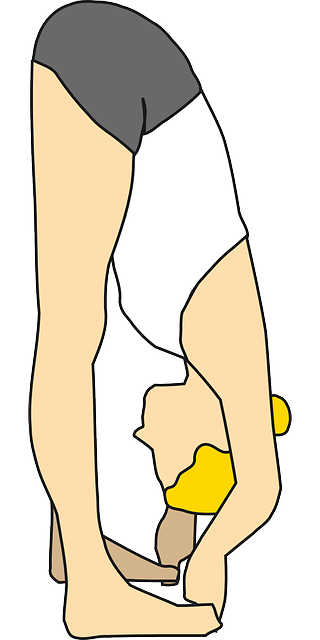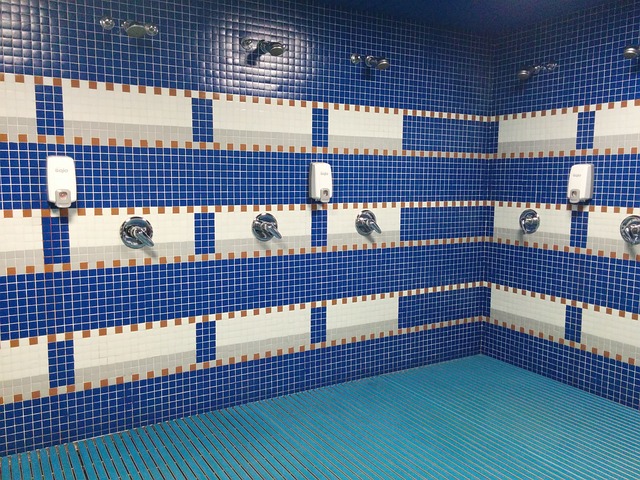Cool-down stretches are simple, short, and virtually effortless post-workout exercise that can help you lower the chance of injury, boost blood flow for better recovery, and restore balance to your body.
Unfortunately, many of us are guilty of stopping using the treadmill or racking our weights and immediately heading for the shower skipping cool-down stretches.
However, just a few minutes of cool-down stretches can greatly help your body and mind. Furthermore, no difficult process is required. Cool-down stretches allow you to bring your body to homeostasis after a workout and enjoy a more seamless transition from exercise to your regular routine.
Here’s a cool-down routine to try the next time you work out. You can perform the complete routine or alternate between stretches depending on the muscles you worked that day.
No matter how many times you repeat each technique, the entire practice should only take you approximately 10 to 20 minutes to complete. If you have time, stretch for a longer period of time to truly allow your body to relax and heal after your workout.
Quad Stretch
Quad stretches can help to relieve muscle tension and increase blood flow. They’re very useful after a run.
Here is How:
- Begin from a standing position.
- Bend one knee and pull your heel up to your buttocks.
- Using one or both hands, grasp your ankle.
- Keep your knees in alignment with your torso by pressing your hips forward.
- Hold for 20 – 30 seconds.
- Repeat on the opposite side.
Finish two or three rounds on each side.
Stretching the Hamstrings
The hamstrings are the major muscle bands behind your thighs. Stretching your hamstrings can help reduce tension in your tendons and hips.
Here is How:
- Begin by sitting with your legs outstretched.
- Bring your right foot’s bottom to the inner of your knee.
- Bend forward at the waist, reaching for the foot of your outstretched leg.
- Bend forward as far as you can.
- Hold it for 20 – 30 seconds.
Rep on the opposite side.
Stretching the calves
Stretching your calves will assist you not only in relieving tension but also in cooling down. After a workout, a calf stretch can help your leg muscles feel relaxed.
Here is How:
- Hold the back of a chair or brace your hands on a wall with one leg straight and your heel on the floor.
- Slowly bend the second knee and your elbows, slightly bending forward, until you feel a calf stretch.
- Hold for 30 seconds before repeating on the opposite leg.
Triceps Stretching
Stretching your triceps can assist in loosening and liberating connective fibers in your upper body and joints. It may also help you with your range of motion.

Here is How:
- Raise your right arm toward the ceiling, keeping your shoulder from rising near your ears.
- Bend your right elbow and draw your hand behind your head, palm toward the center of your back, and middle finger along your spine.
- With your left hand, gently bring your elevated elbow toward your left side while softly pulling it down your back.
- Hold for 30 seconds before repeating on the opposite side.
Repeat on each side three to four times.
Shoulder Stretches
Shoulder Stretches are excellent for relieving muscle discomfort and tension. By alleviating stress and tightness, they can help you feel more relaxed after a workout.
Here is How:
- Place your feet shoulder-width apart.
- Raise your right arm parallel to your body.
- Bring it across your chest, moving your hand to the left side of your body.
- Bring your left hand over the upper part of your right arm while bending your left arm at the elbow.
- Pull your right arm across your body.
Hold for 20 seconds before alternating sides.
Butterfly Stretches
A butterfly stretch can allow your body to adjust after a workout by calming your central nervous system. It can also help to open up the hip joints and reduce stiffness.
Here is How:
- Sit on the floor, your legs extended.
- Pull your right foot’s heel up toward your groin, using your hands if required.
- Allow the soles of your feet to connect by drawing your left heel toward your groin.
- Hold your feet with your hands and place your elbows softly on your knees.
- Sit tall with your back straight and your knees bent toward the floor.
- Hold for 20 – 30 seconds while applying mild pressure to your knees with your elbows.
Repeat 3 times.
Lower Back Stretching
Lower Back Stretching can successfully alleviate stress, enhance range of motion, and avoid injury in your lower back. A knee-to-chest lower back stretch is seen here.
Here is How:
- Lie on your back on a mat or the floor with your knees bent.
- Straighten your left leg out along the floor.
- Bring your right knee up to your sternum.
- Clasp your hands slightly below your knee and wrap your arms over your bent leg.
- Maintain a flat back while lengthening your spine and slowly pulling your knee up and in toward your chest.
- Hold for 20 – 30 seconds.
Repeat on the opposite side.
Downward Facing Dog
A downward-facing dog is an excellent approach to rebalancing your body and mind. Because it is an inversion, your head is lower than your heart. This promotes circulation, restores equilibrium, and lowers stress.

Here is How:
- Begin in a tabletop position, with your palms on the floor, shoulder-width apart.
- Your knees should be beneath your hips.
- Spread your fingers wide and curl your toes under.
- Draw your hips up toward the ceiling by pushing forward with your hands and the balls of your feet.
- Straighten your legs and lift your knees off the floor and straighten your legs.
- Breathe deep as you stretch your upper back, the back side of your legs, and the soles of your feet.
- Relax your neck and your head.
Hold this position for 30 – 60 seconds.
Seated Forward Fold
This stretch can be used as a hamstring stretch to loosen muscles and increase the range of motion. It is also effective in relieving tension and anxiety because it is a yoga stance.
Here is How:
- Sit with your legs fully extended in front of you.
- Deeply inhale and extend both arms above your head.
- As you exhale, softly lean forward from the hips, bringing your hands down toward your toes.
- Gently draw your upper body down toward your legs by placing your arms on your toes, feet, or ankles.
Hold this position for 20 – 30 seconds.
Figure Four
Figure four stretches your hips and buttocks. Stretching these muscles may help to increase flexibility and range of motion. Because you’ll be lying down, lying down can also help you drop your heart rate and keep your breathing calm after a workout.
Here is How:
- Lie on your back; legs bent, and feet flat on the ground.
- Make a figure four with your right ankle and left knee, with the sole of your foot pointing left.
- Bring one arm around the outside of your knee and the other through the middle of your figure four to clasp your hands behind your hamstring.
- Pull the bent leg toward your chest with your hands, keeping your knee from sliding inwards.
Hold this position for 20 – 30 seconds before repeating on the opposite side.
Supine Spinal Twist
A supine spinal twist can assist release and relax lower back muscles. This can help to reduce tension and stress after strenuous weight-bearing exercises.
Here is How:
- Begin by reclining on your back, legs extended.
- Form a T with your arms perpendicular to your body, palms facing down.
- Bend your left knee to a 90-degree before lowering it to the right. Your left knee’s inside should be facing the floor.
- Twist your spine while keeping your shoulders flat on the floor.
- Move your gaze away from your bent knee and toward your right fingertips.
- Allow gravity to draw your knee toward the floor as you relax into the stretch.
Hold this position for 30 – 60 seconds before switching legs.
Forward Fold with Wide Legs
The wide-leg forward fold is great for hip flexibility. Because your head is lower than your heart in the standing posture, increasing circulation and restoring your heart rate to a resting state.
Here is How:
- Place your feet wide apart.
- When you inhale, raise your arms straight up toward the ceiling.
- Bend and lower your hands toward the floor at the center of your stance while you exhale.
- Keep your back flat and your hands on your shins to pause.
- If possible, deepen the stretch by placing your hands directly on the floor in the center of your stance while keeping your legs straight and not bending at the knees.

Hold for 20 – 30 seconds after lowering your head.
Floor Scorpion
The low back, hips, and buttocks muscles are stretched and released by the floor scorpion. According to Jesse Grund, a certified personal trainer with Unconventional Strength, it can help relieve tension and stress.
Here is How:
- Begin by laying face down and extending your arms perpendicular to your body to form a T shape, as well as your legs straight out along the floor.
- Place your chin on the mat softly and stare downward, keeping your spine in a neutral position.
- To keep your shoulders, upper back, and chest in place, lightly press your palms onto the floor.
- Bend your right knee to a 90-degree and lift your right leg.
- Draw your right foot over your left leg, attempting to contact your right foot’s toes to the ground outside your left leg. Your hips and lower back should rotate, but your upper body should stay still.
Hold for 1–2 minutes before returning to a T position and rotating sides.
90/90 With Forward Fold
The 90/90 stretch is an excellent approach to improving hip mobility and alleviating tension-related pain. This helps to minimize lactic acid, which can cause future stiffness while your muscles are still warm after an exercise. Furthermore, improving hip rotation can aid in improving future workouts and prevent lower back pain.
Here is How:
- Place your feet on the floor.
- Bend your left leg to a 90-degree angle with your hip twisted outwards and the sole of your foot facing right.
- Rotate your right leg inward, bending it at a 90-degree angle, so your shin and ankle are on the ground.
- Maintain a straight right knee and hip.
- Once both your legs are at a 90-degree angle, sit up tall to keep your back straight.
- Maintain equal weight distribution in both hips, bend forward, and extend your arms out from your head.
Hold for 1–2 minutes before repeating on the opposite side.
To Conclude on Cool-Down Stretches
Stretching after an exercise can be beneficial to both your body and mind. It is also an efficient approach to bringing your body to balance and restoring regular heart rate and breathing patterns.
Stretching after an exercise can also help with circulation, flexibility, range of motion, soreness, and stiffness. As with any physical activity, you should consult with a healthcare physician to confirm that these stretches are appropriate for you.

